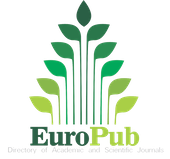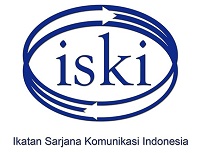The Agenda Setting of Corona: Analysis of the Corona Dissemination Impact on the Community
Abstract
Keywords
Full Text:
PDFReferences
Agus Purwanto, d. (2020). Studi Exploiratif Dampak Pandemi COVID-19 Terhadap Proses Pembelajaran Online di Sekolah Dasar.
Amala, I. (2019). Pengaruh Terpaan Pemberitaan Media Online Tentang Sandiaga Uno Terhadap Sikap Masyarakat (Survey Terhadap Masyarakat Kelurahan Baru Depok). Universitas Pembangunan Nasional Veteran.
Ansor. (2011). Teori Agenda Setting dan Citra Diri Pemerintah Analisis Pemberitaan orupsi dan Penurunan Pemerintahan SBY. JURNAL KOMUNIASI, V, 145-156.
Bianca Michelle Datubara, I. (2019). Instagram TV: Konvergensi Penyiaran Digital dan Media Sosial. MediaTor, 251-263.
Denis, M. (1997). Audience Analysis . SAGE Publishing.
Erika, D. (2011). Komunikasi dan Media Sosial (Communication and Social Media). The Messenger, III.
Hayat, N. (2019). Komunikasi Politik. Makassar: Pilar Nusantara.
https://binus.ac.id. (2020). teori agenda setting dan framing dalam media relations
Ilham, F. H. (2014). Pengaruh Terpaan Pemberitaan Politik di Media Online dan Terpaan Iklan kampanye Politik di Media Televisi Terhadap Elektabilitas Partai Hanura. Interaksi Online.
Kamil, I. (2018). Peran Komunikasi Pemerintahan dalam PenangananLingkungan Kumuh. Mediator: Jurnal Komunikasi, 129-139.
Kriyantono, R. (2008). Teknik Riset Komunikasi: Disertai Contoh Pratis Riset Media, Public Relation, Advertising, Komunikasi Pemasaran. Jakarta: Kencana Prenada Media Group.
Lexy, M. (2010). Metodologi Penelitian Kualitatif (Revisi ed.). Bandung: PT: Remaha Rosdakarya.
LittleJohn, S. W. (1996). Theories of Human Communication Terjemahan Edisi Indonesia. Jakarta: Salemba Humanika.
Munawwaroh, P. R. (2017). Pengaruh Terpaan Media Pada Akun Instagram@ Exploresiak Terhadap Minat Kunjungan Wisata Ke Siak Sri Indrapura. (Doctoral dissertation, Riau University).
Mohammad, E. &. (2020). COVID-19 and communication planning for health emergencies. Jurnal Komunikasi: Malaysia Journal of Communication, 36.
Mulyana, D. (2007). Metode penelitian komunikasi. Contoh-Contoh Penelitian Kualitatif Dengan Pendekatan Praktis. Bandung: Rosdakarya.
Mustika, T. &. (2019). Pengaruh Terpaan Media Terhadap Reputasi Lembaga Pemerintah. Inter Script: Jurnal Of Creative Communication, 1.
Natalia, M. (2017). Agenda Setting Berita Pedofilia di Samarinda Pos. eJournal Ilmu Komunikasi. Fisip-Ummul, 5, 283-295.
Nugroho, Y. A. (2015). Televisi Indonesia: Dinamika Struktur dan Khalayak. Jakarta: Centre For Innovation Policy and Governance, University of Manchester, Fprd Foundation Indonesia.
Pandie, M. M. ((2016)). Pengaruh Cyberbullying di Media Sosial terhadap perilaku reaktif sebagai pelaku maupun sebagai korban cyberbullying pada siswa kristen SMP Nasional Makassar. Jurnal Jaffray, 43-62.
Perse, E. M. (2001). Media Effects and Society. England: Routledge.
Puji, R. (2016). Media Baru, Visi Khalayak Aktif dan Urgensi Literasi Media. Jurnal Komunikasi, 1.
Rahadi, D. R. (2017). Perilau Pengguna dan Informasi Hoax di Media Sosial. Manajemen dan ewirausahaan, 5.
Rulli, N. (2018). Khalayak Media Identitas, Ideologi, Perilaku pada Era Digital.
Sopiah, N. ((2013, June).). Faktor-faktor yang mempengaruhi penggunaan Media Facebook. In Seminar Nasional Aplikasi Teknologi Informasi (SNATI) , (Vol. 1, No. 1).
Sugiyono, P. (2013). Cara Mudah Menyusun Skripsi (Doctoral Dissertation, Tesis, dan Disertasi. Bandung: Alfabete .
Widiastuti, S. P. (2017). Pengaruh Media Exposure dan Kepemilikan Asing Terhadap Corporate Social Responsibility Expenditure dan Corporate Social Responsibility Disclosure (Studi Empiris pada Seluruh Perusahaan yang. Reviu Akuntansi dan BisnisIndonesia, 78-89.
DOI: https://doi.org/10.29313/mediator.v13i2.6302
Refbacks
- There are currently no refbacks.

This work is licensed under a Creative Commons Attribution 4.0 International License
























